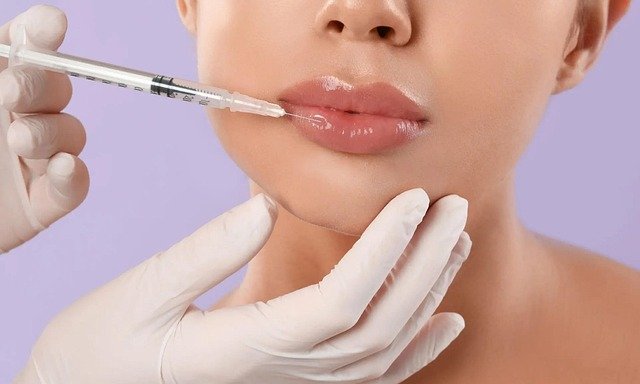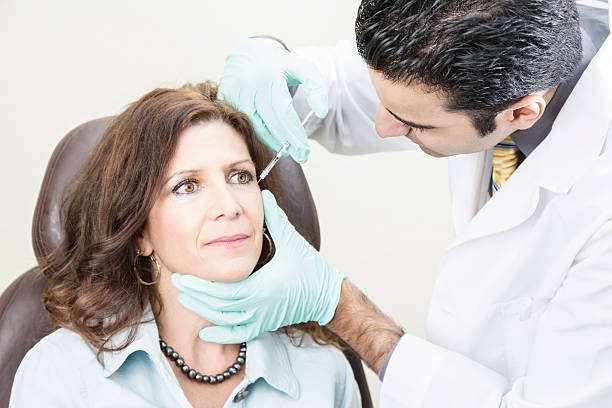Proven Steps to Perfecting the Art of Lip Filler Injections
Whether you’re a seasoned professional or just starting your journey as an injector, these steps will elevate your expertise and client satisfaction. Stay tuned as we delve into the key strategies that will set you apart in the world of lip augmentation.
Understanding Lip Aesthetics
The foundation of mastering the art of injecting lip filler, needle, lies in comprehending lip aesthetics. It involves delving into the Anatomy basics of the face, which entails understanding the structure of the lips. By familiarizing yourself with lip anatomy, you can ensure precise injections that yield optimal results. Knowing the different layers of the lip, vermillion is crucial for effective and safe filler administration.
When discussing aesthetic goals with patients, it’s essential to set realistic expectations for lip enhancement. Exploring various Aesthetic preferences allows you to tailor treatments to each individual’s desires, ensuring satisfaction with the outcome. By engaging in open conversations about desired outcomes, both parties can work together towards achieving aesthetically pleasing results.
Symmetry holds significant importance in lip aesthetics as it contributes to overall facial harmony and vermillion ratio. Emphasizing symmetrical results underscores balance and beauty in lip enhancements. Addressing potential challenges in achieving symmetry equips practitioners to navigate complexities effectively and deliver consistent results across both sides of the lips. Techniques aimed at enhancing lip symmetry, vermillion, and ratio play a pivotal role in refining procedures and elevating patient satisfaction levels.
Patient Preparation
Consultation Process
Before mastering the art of injecting lip fillers, it’s crucial to excel in the patient consultation. This involves delving deep into understanding what patients desire from the treatment. Through thorough consultations, practitioners can assess if individuals are suitable candidates for lip fillers based on their goals and concerns. For instance, a patient may seek fuller lips or more de ned contours.
To ensure successful outcomes, it’s essential to gather comprehensive information during the consultation process. Assessing factors like previous treatments, allergies, and expectations is vital in tailoring the procedure to meet individual needs effectively. Discussing potential Risks and benefits helps manage patient expectations and build trust before proceeding with treatment.
Medical History
Collecting a detailed Medical history is another critical step in preparing patients for lip filler injections. Identifying any contraindications or risks ensures that participants receive safe and appropriate care throughout the procedure. For example, knowing if a patient has any underlying health conditions or allergies helps mitigate complications during treatment.
Safeguarding patient well-being starts with ensuring that medical histories are accurately documented and regularly updated. By staying informed about any changes in a participant’s health status or medications, healthcare providers can adapt their approach accordingly to maintain safety and efficacy during lip filler procedures.
Consent Forms
Informed Consent plays a pivotal role in the lip filler injection process as it signifies that patients understand and agree to undergo lip treatment willingly. Explaining the purpose of Consent forms helps individuals make informed decisions about their participation in this exciting journey towards enhancing their lips aesthetically.
When patients sign these forms, they acknowledge their comprehension of potential risks associated with lip llers while also expressing consent for the procedure itself. Documenting these agreements not only protects both parties legally but also fosters transparency and accountability throughout each stage of treatment.
Mastering Injection Techniques
Needle Types
Understanding the different types of needles used in lip injections is crucial. By selecting the appropriate needle sizes for specific techniques, you can enhance precision and minimize discomfort for patients. Considering patient comfort and desired outcomes when choosing a needle type ensures a smoother injection process.
Identifying key areas on the lips is essential. Targeting specific zones, such as the lips for volume enhancement or contouring, allows for tailored results. Achieving natural-looking outcomes through Strategic placement of fillers enhances facial aesthetics and overall satisfaction for patients seeking lip enhancements.
Volume Control
Mastering techniques to control the volume during injections is paramount. Avoid overfilling or underfilling the lips by carefully regulating the amount injected at each site. Balancing volume across all treated areas ensures harmonious results, creating a symmetrical and balanced appearance post-procedure
- Pros: precision in injection technique, tailored results based on patient needs.
- Cons: Requires practice to master control over filler volumes effectively.
- Key Information: Proper needle selection impacts injection accuracy and patient comfort.
Achieving Pain-Free Injections
Topical Anesthetics
Topical anesthetics are crucial for ensuring patient comfort during lip filler injections. Before starting the procedure, discussing different options with patients is essential to address any concerns and choose the most suitable anesthetic. Proper application of topical anesthetics guarantees their effectiveness in minimizing pain or discomfort during the injection process.
- Benefits of using topical anesthetics:
- Reduces pain sensation
- Enhances patient experience
- Options available:
- Creams
- Gels
Injection Techniques
Mastering various Injection techniques is vital for successful lip filler procedures. Understanding the differences between linear, fanning, and serial puncture methods allows practitioners to adapt their approach based on individual patient needs and desired outcomes. Flexibility in technique selection ensures optimal results and patient satisfaction.
- Different injection techniques: a) Linear: Suitable for precise shaping. b) Fanning: Ideal for creating volume. c) Serial puncture: Ensures even distribution.
2. Adapting techniques: a) Based on lip structure. b) Considering the desired fullness level
Patient Comfort
Prioritizing patient comfort throughout the entire procedure contributes significantly to a positive experience and successful outcomes. Implementing techniques such as gentle movements, managing expectations, and providing reassurance helps minimize any potential pain or discomfort that patients may feel during or after the injections.
Step-by-Step Injection Guide
Marking Areas
When injecting lip fillers, marking the injection points is crucial. Landmarks help guide the process and ensure precision. By carefully marking these areas, accuracy and symmetry are maintained throughout the procedure.
To achieve natural-looking results, gradual filling is essential. Avoid injecting excessive volume at once to prevent an unnatural appearance. Discussing treatment plans with patients allows for a gradual enhancement approach, enhancing satisfaction and reducing risks associated with overfilling.
Gradual Filling
Symmetry checking during the injection process is vital for balanced results. Regular assessment of lip symmetry enables adjustments as needed to enhance overall balance. Tools like mirrors or rulers aid in accurate evaluation and help achieve optimal outcomes for patients seeking lip filler treatments.
Advanced Techniques
Layering Method
The layering method involves building up the layer gradually in multiple layers to enhance lip texture and contour. By employing strategic layering techniques, injectors can achieve optimal results that appear more natural. This approach allows for a more controlled enhancement process, ensuring the filler is distributed evenly.
Using the layering method helps in achieving precise results by strategically adding volume to specific areas of the lips. For example, injecting a small amount of filler at a time and allowing it to settle before adding more can prevent overfilling or lumps. This technique is particularly useful when aiming for subtle enhancements or when addressing new lines around the lips.
- Pros:
- Precise control over lip augmentation
- Gradual buildup for natural-looking results
- Cons:
- Requires patience and skill to master
Contouring Lips
Contouring lips with fillers involves using them to enhance lip shape and definition based on patient preferences. Injectors can create either subtle or dramatic contours by strategically placing filler along the vermilion border or Cupid’s bow. Balancing upper and lower lip proportions is essential for achieving harmonious results.
By contouring the lips effectively, injectors can correct asymmetries and improve overall facial harmony. For instance, enhancing the philtrum area with fillers can help balance out uneven features between both sides of the upper lip. This technique not only enhances aesthetics but also boosts self-confidence in patients seeking symmetrical outcomes.
- Key Information:
- Strategic placement of fillers enhances lip contours.
Managing Complications
Identifying Issues
Recognizing potential complications is crucial when mastering the art of injecting lip fillers. Monitoring for signs of infection, swelling, or bruising is essential during and after treatment. Taking prompt action when issues arise can prevent severe complications
In case of complications, Immediate actions are necessary. Knowing how to respond to Emergencies like allergic reactions or excessive bleeding is vital. Having protocols in place ensures quick and appropriate care and support for patients.
Immediate Actions
Post-procedure follow-up plays a significant role in managing complications effectively. Establishing post-treatment follow-up procedures with patients helps track healing progress and address any concerns promptly. Maintaining open communication fosters optimal outcomes for both the patient and practitioner.
Aftercare and Recovery
Immediate Care
After receiving lip fillers, it’s crucial to guide patients on immediate advising them on using aftercare. This involves ice packs to reduce swelling and discomfort. Patients should also be instructed to avoid certain activities, like vigorous exercise or excessive sun exposure, post-treatment. By following these guidelines, proper healing can be ensured while minimizing potential complications.
To promote long-term maintenance of lip fillers, patients need to understand the expected lifespan of their fillers and the possibility of needing touch-ups in the future. It’s essential to educate them about different skincare products or treatments that can help extend the
longevity of their results. By discussing these aspects with patients, they can make informed decisions regarding their filler maintenance routine.
Activity Restrictions
Patients should be advised on temporary activity restrictions after getting lip fillers. This includes limitations on strenuous exercise, prolonged sun exposure, as well as certain foods and drinks that may interfere with the healing process. By adhering to these recommendations, optimal healing can occur, which contributes significantly to preserving the results for a longer period.
Certification and Training
Course Overview
A lip filler training course typically covers a range of essential topics to equip participants with the necessary skills. These courses outline key areas such as facial anatomy, injection techniques, product selection, and safety protocols. By focusing on these aspects, individuals can develop a comprehensive understanding of administering lip fillers safely and effectively. The learning objectives often include mastering different injection methods, recognizing potential complications, and ensuring patient satisfaction.
Moreover, the program aims to provide participants with practical knowledge that they can apply in real-world scenarios. Through interactive sessions and demonstrations, aspiring practitioners can enhance their expertise in injecting lip fillers accurately. Understanding the importance of patient assessment and consultation is crucial for delivering personalized treatment plans tailored to individual needs. Overall, a well-structured course offers a solid foundation for mastering the art of injecting lip fillers confidently.
Practical Sessions
Hands-on practical sessions play a vital role in reinforcing theoretical knowledge acquired during training. These sessions allow participants to practice various injection techniques under supervision while receiving valuable feedback from experienced instructors. Moreover, live demonstrations provide insights into best practices and industry standards when performing lip augmentation procedures. By engaging in supervised practice on models or mannequins before working on actual patients, individuals can refine their skills and build confidence in their abilities.
Furthermore, these practical experiences enable trainees to understand the nuances of different filler products and their applications based on specific aesthetic goals. Developing proficiency through hands-on training ensures that practitioners are well-prepared to deliver safe and satisfactory results to clients seeking lip enhancement treatments.
Closing Thoughts
You’ve now delved deep into the world of lip fillers, mastering techniques, and understanding the nuances of safe and effective augmentation. Remember, practice makes perfect in this art – keep honing your skills. Always prioritize patient safety, consent, and aftercare. Stay updated on advanced methods to provide top-notch service. Now it’s your turn to shine in this field – go out there and create beautiful smiles confidently!
Frequently Asked Questions
What is the importance of patient consent in lip augmentation?
Patient consent is crucial as it ensures that the individual understands the procedure, risks involved, and gives permission for treatment. It establishes trust between you and your patients, highlighting transparency and respect for their autonomy
How can I ensure safe and effective lip augmentation methods using good injection techniques for ideal lips?
To ensure safety and effectiveness in lip augmentation, always prioritize proper training, certification, and adherence to best practices. Choose high-quality products, maintain sterile techniques, conduct thorough assessments before treatment, and provide comprehensive aftercare instructions.
What are some advanced techniques used in lip filler injections for aged, thin, and volume lips?
Advanced techniques in lip filler injections include using cannulas for precise placement with minimal trauma or bruising. Layering injections strategically can create natural-looking results while avoiding overcorrection. Tailoring treatments to each patient’s unique facial anatomy enhances overall satisfaction.
Why is mastering injection techniques essential for successful outcomes in lip fillers?
Mastering injection techniques is critical as it directly impacts the results of lip filler treatments. Proper technique ensures even distribution of product, minimizes discomfort for the patient, reduces the risk of complications such as lumps or asymmetry, and contributes to achieving aesthetically pleasing outcomes.
How important is aftercare following a lip filler procedure?
Aftercare following a lip filler procedure plays a significant role in ensuring optimal results and minimizing complications. Patients should follow post-treatment instructions diligently to promote healing, reduce swelling or bruising, and avoid certain activities like excessive sun exposure or vigorous exercise that could affect outcomes negatively
PATIENT CONSENT
Importance of Patient Consent
Patient consent is crucial when performing any cosmetic procedure, including injecting lip fillers. Obtaining consent ensures that the patient understands the treatment, its potential risks, and benefits. It also establishes a legal and ethical framework for the procedure.
Consent should be informed, voluntary, and given without any coercion. Before proceeding with lip filler injections, it’s essential to discuss the procedure in detail with the patient. This includes explaining possible side effects, expected outcomes, and post-treatment care instructions.
Obtaining Patient Consent
To obtain valid consent for lip filler injections, healthcare providers must engage in open communication with patients. They need to explain the purpose of the treatment clearly and
address any concerns or questions raised by the patient. Discussing alternative treatments or options can help patients make an informed decision.
- Explain: Describe the process of injecting lip fillers step by step.
2. Explain: Describe the process of injecting lip fillers step by step.
3. Benefits: Highlight how lip fillers can enhance lip volume and shape.
4. Aftercare: Provide detailed instructions on post-treatment care to ensure optimal results.
Safe and Effective Lip Augmentation Methods
Proper Training and Certification
To ensure safe and effective lip augmentation, it is crucial to undergo proper training and obtain certification. This includes learning about facial anatomy, injection techniques, product selection, and managing complications. Without adequate training, there’s a higher risk of adverse effects.
Obtaining certification from reputable organizations like the American Academy of Facial Esthetics or the American Board of Aesthetic Medicine adds credibility to your skills. These certifications demonstrate that you have met certain standards in performing lip filler injections
Understanding Different Filler Types
There are various types of fillers available for lip augmentation, such as hyaluronic acid-based Fillers (e.g., Juvederm, Restylane) and collagen-stimulating fillers (e.g., Sculptra). Each filler type has its unique characteristics in terms of consistency, longevity, and intended use. Understanding these differences is vital for achieving optimal results for patients
Knowing which filler type suits different lip shapes or desired outcomes can significantly impact the final result. For instance, thicker fillers may be more suitable for adding volume to thin lips, while softer fillers could be ideal for enhancing natural fullness.
Injection Techniques
Mastering various injection techniques is essential when performing lip filler procedures. Techniques like linear threading (for defining borders), fanning (for creating volume), or cross-hatching (for smoothing ne lines) require precision and practice to achieve desirable outcomes without complications.
Using a combination of techniques based on individual patient needs can help create natural-looking results that enhance their overall facial aesthetics seamlessly.
Advanced Lip Filler Techniques
Precision Placement
When injecting Lip fillers, precise placement is crucial for achieving natural-looking results. Injecting in the right areas can enhance the lips’ shape and volume effectively. For example, focusing on the cupid’s bow or vermilion border can create a de ned and balanced look.
Injecting too much filler in one area can lead to an unnatural appearance or even cause complications. By strategically placing small amounts of filler at a time, you ensure a more controlled outcome. This technique allows for adjustments during the procedure to achieve symmetrical and harmonious results.
Layering Technique
Layering lip fillers involves adding multiple thin layers of filler gradually to build volume and shape. This method helps prevent overfilling and allows for a more customized approach based on individual lip structure. By layering lip fillers, you can control the amount injected at each stage, ensuring a gradual enhancement process.
The layering technique also promotes better integration of the filler with natural tissues, leading to smoother and longer-lasting results compared to injecting large volumes at once. It provides flexibility in adjusting the final look according to the client’s preferences while minimizing risks associated with injecting too much filler simultaneously.



